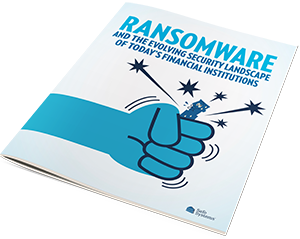
Financial Institutions
Are Targets
With high volumes of sensitive data, community banks and credit unions are often victims of cyber attacks
Data Held for Ransom
Criminals are becoming increasingly sophisticated and malicious
Changing Threat Landscape
More attacks are using tools built into the system already, making identification more difficult
97%
of cyber attacks are avoidable, with the right layers
70%
of security incidents involving loss are from insiders
Service Includes Advanced Features
- Fileless malware detection – Malware that lives in system memory may not actually be downloaded or installed on the machine. Most traditional antivirus products work by scanning files on an endpoint. If the malware lives in memory and not as a file on the machine’s hard drive, most traditional antivirus/antimalware solutions are not able to see or analyze the threat.
- Anti-Ransomware - Ransomware is one of the scariest forms of malware. It can make your data unusable and then charge a fee to get your data back. It is popular as there is money to be made by infecting computers. Using advance mechanisms like monitoring popular ransomware activities, such as Volume Shadow Copy manipulation, to identify and stop these types of malware are critical to a good cybersecurity plan.
- "Living off the Land" - More and more attackers are employing a technique known as “Living off the Land” where they use local software to perpetrate their attach. Tools like Powershell, WScript, and CScript are continually evaluated for nefarious behavior.
- Sandboxing – Suspicious or unknown executable files are sent to the cloud and detonated in a secure environment. Alerts will be generated for files that exhibit malicious behavior, and the files quarantined.
- Root Cause Analysis – Scout continually watches the process, registry, and network activity of endpoints. When Scout identifies malicious activity, the scope of this activity can be seen and evaluated more easily than traditional antivirus solutions. This may mean the difference in having to declare an incident and identifying a piece of malware with no long-term harm to the institution.
FAQ
Frequently Asked Questions about Scout
What is the difference between traditional antimalware/antivirus and Scout?
Traditional antimalware/antivirus solutions relied completely on signatures and heuristics of files accessed by an endpoint. Scout employs additional tools and techniques, including machine learning “artificial intelligence”, to more deeply evaluate these files. Additionally, Scout analyzes processes in memory in the pre-execution stage to catch what is called file-less malware. Traditional tools are unable to analyze these types of attacks.
What is it ransomware?
Ransomware is a type of malware, or malicious software, designed with the unique intent on encrypting then blocking an owner’s access to their data or files until a specified sum of money is paid.
How do I stop ransomware?
The best practice against ransomware is a combination of training and software. Training your end users to recognize potential attacks and avoid being an unwitting part of a successful breach is important. In addition to user training, installing an anti-ransomware solution will thwart attempts. By stopping the encryption of your data the criminals have nothing to hold for ransom.





